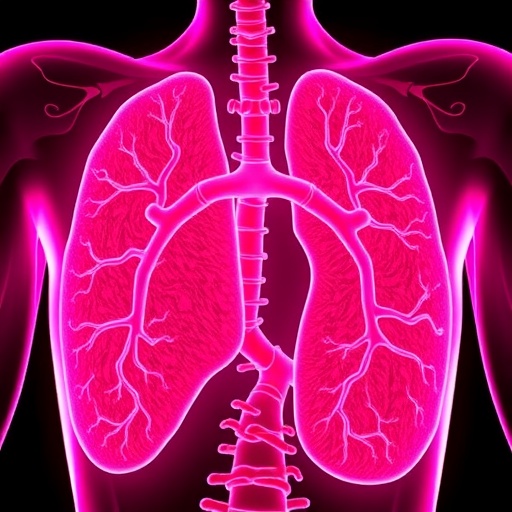In the intricate world of neonatal medicine, the silent battle against bilirubin-induced brain damage continues to challenge clinicians and researchers alike. A groundbreaking study by Stavis and Gerdes, published in the Journal of Perinatology in 2025, brings renewed focus on the critical interplay between hypoalbuminemia, kernicterus, and the bilirubin/albumin ratio. This emerging evidence reshapes our understanding of jaundice management in newborns, underscoring the delicate molecular dance that can mean the difference between transient neonatal jaundice and devastating neurological injury.
Kernicterus, a rare but severe form of bilirubin encephalopathy, arises when unconjugated bilirubin crosses the blood-brain barrier and accumulates in brain tissue, causing irreversible damage. Despite advances in neonatal care, kernicterus remains a tragic outcome that clinicians strive to prevent. The study deepens the scrutiny of how albumin, a vital plasma protein, modulates the neurotoxicity of bilirubin by binding and sequestering it, thus preventing its free form from wreaking havoc in the central nervous system.
Hypoalbuminemia, a condition marked by abnormally low serum albumin levels, emerges as a pivotal factor in this equation. Albumin’s capacity to bind bilirubin hinges upon its availability; as albumin levels wane, the free, unbound bilirubin fraction increases, amplifying the risk for brain penetration and subsequent injury. Stavis and Gerdes meticulously examine this biochemical nexus through bedside data and laboratory measurements, elucidating the prognostic value of the bilirubin/albumin ratio as a more nuanced biomarker than total bilirubin alone.
This refined focus is revolutionary, challenging the traditional reliance on serum bilirubin thresholds without context of albumin status. The authors argue convincingly that the bilirubin/albumin ratio offers a more physiologically accurate assessment of bilirubin neurotoxicity risk. They illustrate that conservative reliance on total bilirubin values may overlook infants vulnerable due to compromised albumin binding capacity, particularly those presenting with hypoalbuminemia from underlying conditions such as prematurity, sepsis, or malnutrition.
In neonatal physiology, albumin serves not merely as a carrier protein but as a critical neuroprotective shield. The molecular binding sites on albumin allow for reversible conjugation of bilirubin molecules, essentially “mopping up” free bilirubin to be safely transported to the liver for excretion. When this shield is thinned, bilirubin’s lipophilic character facilitates its diffusion through the blood-brain barrier, resulting in bilirubin deposition predominantly in basal ganglia and brainstem nuclei, the classical hallmarks of kernicterus pathology.
Clinically, the findings imply that monitoring albumin levels alongside bilirubin becomes essential in newborn intensive care settings. Implementing routine bilirubin/albumin ratio measurements could recalibrate decision-making algorithms for interventions like phototherapy and exchange transfusions. The researchers demonstrate that tailored therapies guided by this ratio may prevent over- or under-treatment, potentially reducing iatrogenic complications and improving long-term neurodevelopmental outcomes.
Equally compelling is the study’s exploration of factors contributing to hypoalbuminemia in neonates. Albumin synthesis is immature in preterm infants; concurrently, inflammatory states or hepatic dysfunction can further diminish circulating albumin. These vulnerabilities underscore the importance of a holistic clinical evaluation where nutritional status, infection control, and hepatic function assessments synergize with bilirubin/albumin ratio interpretation.
Stavis and Gerdes leverage advanced analytical techniques to quantify bilirubin and albumin with heightened precision, employing spectrophotometric assays coupled with robust statistical modeling. Their methodological rigor enhances confidence in the bilirubin/albumin ratio’s validity as a predictive biomarker, paving the way for larger prospective multicenter trials to validate these findings across diverse neonatal populations and varying care environments globally.
Beyond the immediate clinical implications, this study opens intriguing avenues for pharmacological innovation. Insights into albumin’s binding dynamics suggest the potential for therapeutic agents that could augment or mimic albumin’s binding capacity, thereby bolstering endogenous defenses against bilirubin neurotoxicity. Such approaches could complement current phototherapeutic strategies, heralding a new era of targeted neonatal neuroprotection.
Additionally, the research challenges neonatal intensive care units to rethink standard monitoring protocols. Integrating bilirubin/albumin ratio assessments may require investment in laboratory infrastructure and staff training but promises a substantial return in the form of more precise risk stratification and resource utilization. This paradigm shift aligns with precision medicine principles increasingly advocated in modern neonatal care.
Importantly, the study emphasizes that hypoalbuminemia’s impact extends beyond bilirubin neurotoxicity, influencing overall neonatal morbidity and recovery trajectories. The interrelationship between albumin levels and systemic health parameters warrants ongoing investigation, as the serum albumin pool may also reflect broader homeostatic imbalances affecting neonatal resilience.
With this comprehensive analysis, Stavis and Gerdes provide a clarion call to the neonatology community. The bilirubin/albumin ratio emerges not only as a diagnostic marker but as a window into the molecular underpinnings of jaundice complications. Their work reinvigorates a nuanced appreciation for biochemical interactions governing neonatal health, fostering hope for improved preventative strategies against kernicterus.
In the broader scope of pediatric research, these findings resonate beyond newborn jaundice management. They highlight the necessity of integrating protein-biomarker interactions in evaluating risk and guiding therapy for various neonatal conditions characterized by metabolic disruption and protein alterations. This interdisciplinary perspective may inspire analogous investigations in other domains of neonatal and pediatric care.
As the medical community digests these insights, the challenge will be translating them swiftly into clinical practice without delay. The study’s implications advocate for immediate inclusion of albumin assessment in jaundice protocols, a feasible yet impactful change that can be integrated in diverse healthcare settings worldwide, from high-resource centers to underserved regions where kernicterus prevalence remains stubbornly high.
Ultimately, this research exemplifies the confluence of molecular biology, clinical epidemiology, and neonatology, a harmony essential for tackling complex neonatal disorders. The bilirubin/albumin ratio, as illuminated by Stavis and Gerdes, offers a beacon for safer neonatal care, promising to transform outcomes for vulnerable newborns globally, moving closer to a future where kernicterus is an obsolete word in medical history.
Subject of Research: The relationship between hypoalbuminemia, kernicterus, and the bilirubin/albumin ratio in neonates.
Article Title: Hypoalbuminemia, kernicterus, and the bilirubin/albumin ratio.
Article References:
Stavis, R.L., Gerdes, J.S. Hypoalbuminemia, kernicterus, and the bilirubin/albumin ratio. J Perinatol (2025). https://doi.org/10.1038/s41372-025-02363-5
Image Credits: AI Generated




